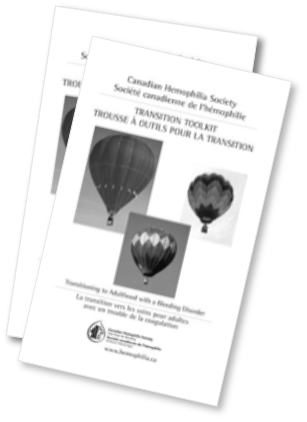At one time or another we all find ourselves learning and adapting to a new stage in life. This is a process called transition, and for some of us it can be a journey that spans many years. For families living with hemophilia, many parts of the journey are shared with the comprehensive care team.






hemophilia
programs


hemophilia
programs
and skills
fitness
treatment
with the care
team
make decisions
management
transfer to
another program,
clinic, or hospital
appointments
treatment
supplies
treatment away
from home
navigating the
insurance
system for the
first time
issues
developmental
issues


